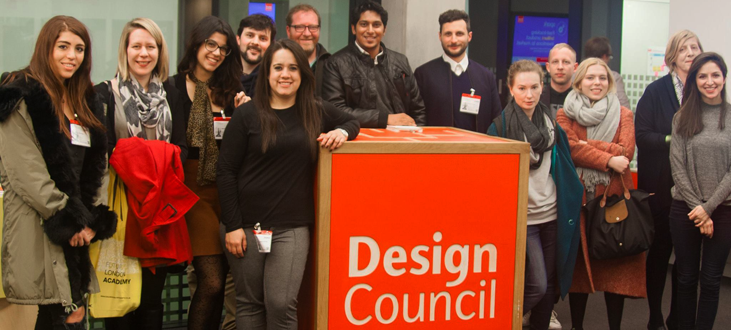Design Thinking and Innovation week at Future London Academy
Last week we were invited to take part in the Design Thinking and Innovation week in London organized by the Future London Academy. It was a such a pleasure to share experiences with all the assistants and professionals involved.
We were accommodated in a very nice location in the heart of central London (Old Street, Shoreditch) where you can breathe design and culture and on each step you make in the street.
On Monday morning, we visited the central office of Head in Tottenham Court Road where we talked with Lola Oyelayo (director of Strategy & User Experience of Head) about understanding how to be creative in an Agile world. We also discussed the values all companies should have: integrity, collaboration and the pursuit of excellence; and how using a Product Canvas can help creating products in this Agile world.
In this Agile world we are living in, if we want to success we should:
– Understand creativity with a divergent thinking mindset. This means being always mind open to different possibilities, the path is never going to be a straight line.
– Use constraints to our favour. Making a project from a blank sheet of paper is very hard, the more open the project is, the more things that may affect to it and the more difficult to set a goal. Quoting Igor Stravinsky: ” The more constraints one imposes, the more one frees one’s self”.
– Create creative spaces and processes. We have to create a limited space in order to get creative solutions. We talk about space as a documentation tool, if we make our environment creative we don’t have to document every single step in the traditional used way.
– Don’t be reluctant to change. The pace things change in this digital era is always accelerating, so it creates the need of changing and evolving to keep adding value on our work. Try different approaches and change the way you look to the world.
During the afternoon we talked with Darius Pocha from Joy Lab about Neuroscience and Design. How can we boost our creativity by understanding how our brains work.
From a very anatomical point of view should try to hack the DMN (Default Mode Network) of our brain to bypass the known as “Theory of mind” which tells us about how our Limbic System keeps us alert, therefore, losing concentration on the things we do.
To do so, and explained in easy to understand words, we should: be interested in the topic we are working on, create an environment we feel goon in (better calm and relaxed, out of distractions) and allow and search for bi-association (combine ideas).
On Tuesday, we kicked off talking about how Big Data and creativity work together with Iason Pakogiannis from Yieldify.
Later on we met Bia Bezamat and Will Seymour at GDR who showed us how to offer research to your clients based on trends, quantitative analysis, socio-economic trends and foreseeing future scenarios. We also learned how to make symbiotic collaborations between companies creating a network of knowledge and contacts.
To finish, we shared ideas and different examples of creative services in this new digital world: “Consumers do not separate physical and digital worlds, brands should not either”
We closed the day with a very good visit to the Design Council where we got a very good explanation on how to use design from small scale of a the pixel to the big picture of buildings and spaces in order to improve people’s lifes.
We should see design from a broad perspective and as a mindset to approach problems. But furthermore, economically speaking, design is very profitable, the Design Council measured that from each Pound spent on design 3 Pounds are generated. Maybe that fact is not that obvious at first glance for many people, but in the long run you will get much more than you invested in return.
To learn more about the London Design Thinking and Innovation week, do not miss the second part of this post next week 🙂


